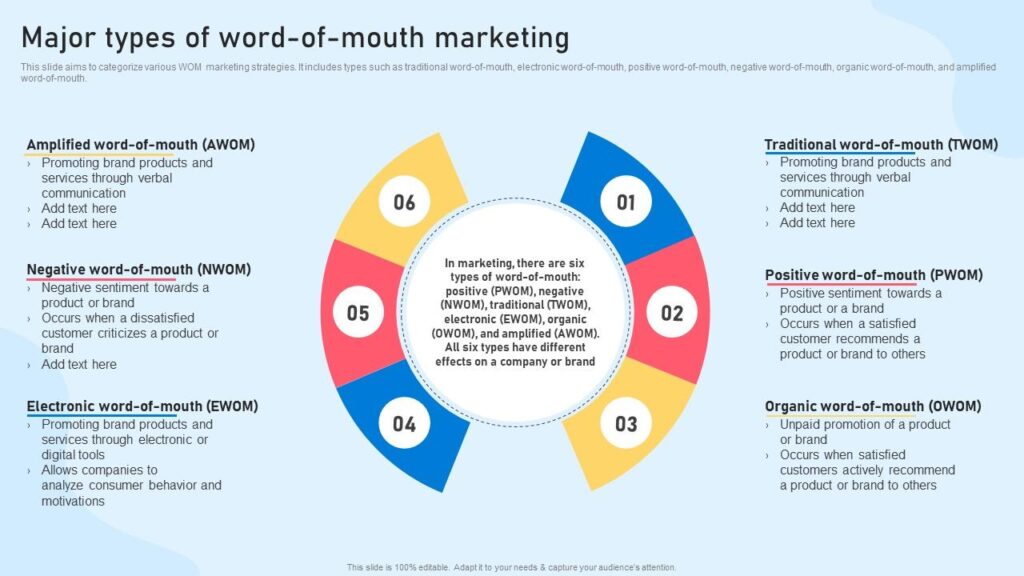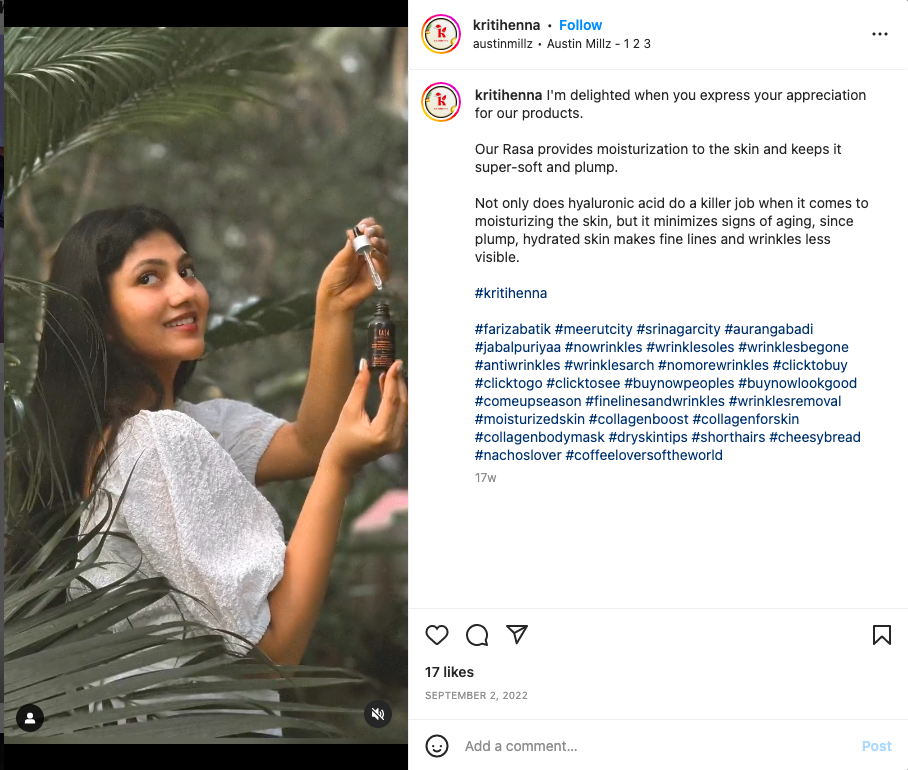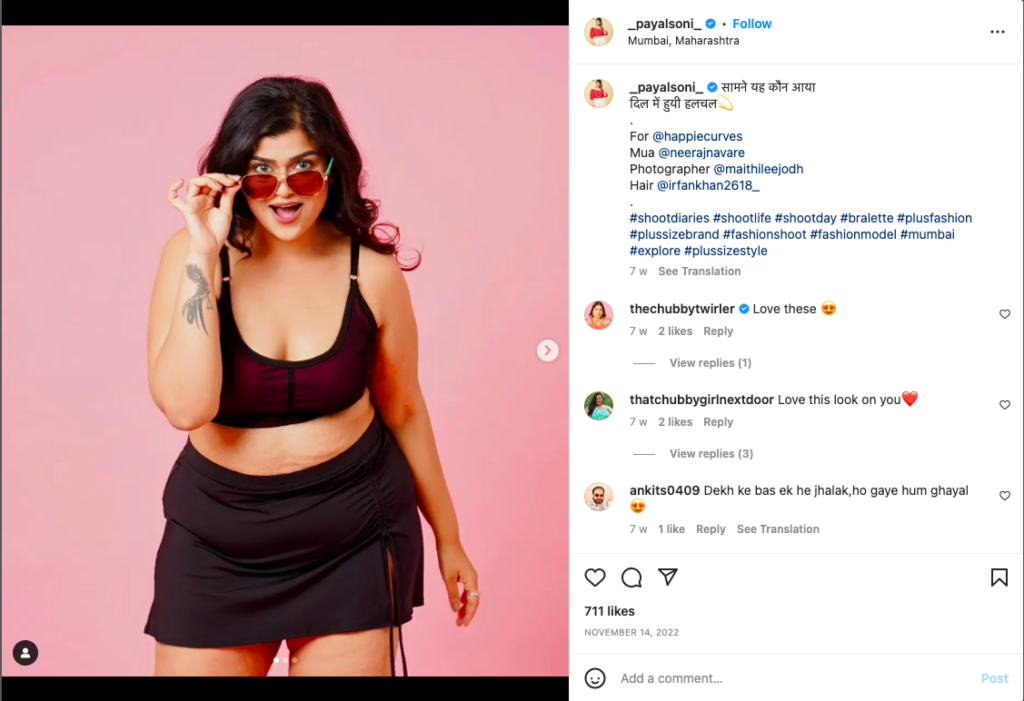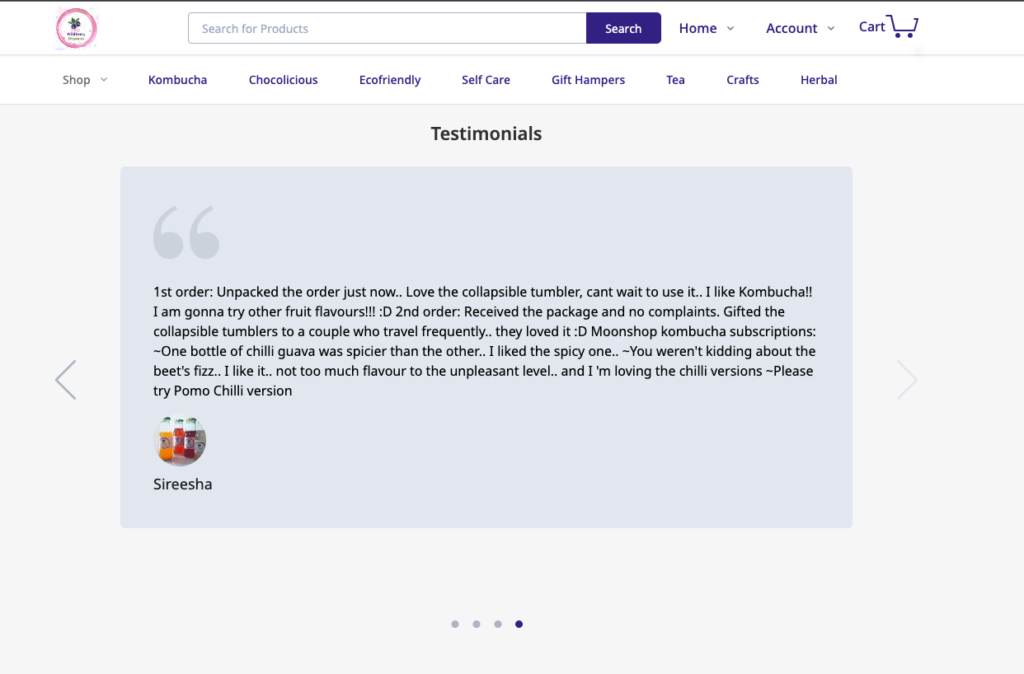Have you ever talked about your favourite restaurant on the block, and then your friends and family went and checked it out?
Or when people complimented you on your fragrance and asked you about it?
What about that one thrift shop where you found the best affordable shoes that you could not stop raving about?
These are some straightforward examples of word-of-mouth marketing.
But as a D2C brand, how does word-of-mouth marketing help your brand? And do you actually have any control over this form of marketing? Here is everything you need to know!
Contents
- 1 What is word of mouth marketing?
- 2 Types of word-of-mouth marketing
- 3 Why is the word-of-mouth effective?
- 4 Why is word-of-mouth marketing important for D2C and small businesses?
- 5 What is the difference between WoM, referral marketing & conversational marketing?
- 6 Word of mouth marketing strategy: With LIVE examples
- 7 Word-of-mouth marketing FAQs
What is word of mouth marketing?
Word-of-mouth marketing is a type of free advertising through positive organic discussions that your customers have after interacting with your band.
This is one of the most untapped and powerful forms of marketing present in our society.
Here are some statistics from Semrush that will show you just how effective WoM can be.
In eCommerce, the categories that benefit most from this form of marketing are: Electronics, food and baked goods, clothes and accessories
Types of word-of-mouth marketing

Word-of-mouth marketing takes various forms, each with distinct advantages:
- Amplified word-of-mouth: Actively boost positive recommendations through strategies like referral programs and social media incentives.
- Negative word-of-mouth: Address and manage unfavorable customer experiences to mitigate the impact of negative reviews.
- Electronic word-of-mouth (eWOM): Utilize online platforms and social media to leverage digital channels for customer recommendations.
- Traditional word-of-mouth: Classic person-to-person recommendations through offline interactions and conversations.
- Positive word-of-mouth: Organic sharing of satisfied customer experiences, driven by product quality and exceptional service.
- Organic word-of-mouth: Natural and spontaneous sharing of positive experiences by satisfied customers, emphasizing authenticity.
Why is the word-of-mouth effective?
Word-of-mouth is a potent and influential form of communication that holds a unique effectiveness in shaping opinions and driving decision-making.
Unlike traditional advertising, which may be perceived as biased or self-serving, word-of-mouth relies on the authenticity of personal experiences and recommendations.
Human nature tends to trust information coming from friends, family, or acquaintances, as it is often seen as more genuine and unbiased. Additionally, word-of-mouth operates within established social circles, fostering a sense of community and shared values.
The emotional connection and trust inherent in personal referrals make them a powerful tool for businesses and individuals alike, as they tap into the fundamental aspects of human connection and credibility, ultimately influencing choices more compellingly and compellingly.
Why is word-of-mouth marketing important for D2C and small businesses?
For D2C brands and startups, word-of-mouth marketing forms the most genuine channel of marketing. According to Nielsen, 92% of customers trust family and friends over an advertisement they saw.
Social media advertisements are also a money game. Those who have more money can push it out to as many people as they want.
But if you want more conversions from people who would actually be interested in your product, the word-of-mouth strategy can be an inexpensive and foolproof way of getting more customers.
What is the difference between WoM, referral marketing & conversational marketing?
All three does depend on communication but there are some key differences between these three types of marketing.
Referral marketing vs. Word-of-mouth marketing
In the first model, there is the promise of an incentive. If a customer gives a referral code to a non-user, both get some benefit when the non-user signs up. It could be a discount coupon, cashback or a freebie.
In word-of-mouth marketing, a customer talks and hypes up a brand to a non-user even without the promise of a gift/discount in return. They do it purely out of their own happiness with the products and they want their friends/family members to also experience it.
The referral method even though brings in new customers, it does not guarantee good quality and trust in the brand. WoM on the other hand is purely based on the experience of the customer.
Conversational marketing vs. Word-of-mouth marketing
The conversational marketing model refers to the use of automation to increase communication with a customer. This could be in the form of live chat options, chatbots, post-purchase feedback calls, pop-ups etc. This form of marketing is between the online seller and the customer.
WoM on the other hand is between the online seller, the customer and external people outside this circle.
Word of mouth marketing strategy: With LIVE examples
This type of marketing is not really in a brand’s control since ultimately it’s the product quality and customer experience on your eCommerce website that will count.
But, there are some ways to drive Word of Mouth marketing that can get customers to visit your store. Let’s dive in!
1. Build social currency
Social currency refers to social proof on social media that develops when people who have experienced your product or service talk about you. It could be positive or negative in nature.
All this chatter cumulatively builds your brand’s reputation. It either convinces people to try your brand out or keeps them away.
As and when your brand starts yielding more power and influence on social networking platforms and creates an impact on others, your brand is said to have social currency.
These are the 4 best ways of building a social currency for your brand:
Influencer marketing
Not exactly organic – but influencer marketing can get people outside your community talking about your brand. It can be organic too if an influencer promotes your product because they genuinely liked it and not because it’s a sponsored post.
Influencer marketing can really build your reputation on social media. Here’s a detailed evaluation of how influencer marketing is evolving for D2C brands.
Kriti Henna, a skincare brand powered by Instamojo, swears by influencer marketing.

So does Happie Curves, an Inclusive lingerie brand on Instamojo.

Testimonials and reviews
An Instamojo survey showed that 49% of people will not buy a product if there are no reviews of a product. Reviews help create social proof.
Especially with the new government eCommerce framework in place to fight fake reviews, the importance and legitimacy of reviews have grown.
Here’s an example of detailed reviews left on the organic eco-conscious brand – Wildberry Organics

Customers that leave behind reviews or put up social posts reviewing your product can build your brand awareness and also impact buyer behaviour.
Pro tips:
- Incentivize customers to put up video testimonials with a discount coupon
- Send push notifications or text msgs to ask for reviews
- Don’t delete old reviews since 86% of customers will look at customer reviews from the past three months
Track and monitor your NPS score also to know how customers have been perceiving your brand. Download our eCommerce trust report to know more about these tools and strategies that help you generate trust.
2. Social media presence
If you have been reading our blogs, you’d know how we emphasize creating a solid social presence. Not just on mainstream platforms like Instagram or Facebook, but on unconventional platforms such as Pinterest and Reddit too.
A social presence allows you to connect to your community in real-time, it gives you the opportunity to have your social listening on and to understand the preferences of your audience.
3. Create triggers
Triggers are certain events that prompt people to suddenly discuss you. Triggers are what create a buzz around your brand.
Here are 4 examples of triggers that you can put out:
Product launch
When launching a new product, create content around it first. People should want the product even before it’s on the market. Here’s a checklist to get you started.
Create a buzz using creative marketing techniques.
82ExMeta
Bollywood Star, Deepika Padukone’s new skincare launch created waves on social media. Her launch event included exclusive invites to influencers and content creators. Check out the hashtag #82eMeta for all the glam!
I might not know what 82E products are like, but I sure do want to try them now. Marketing at its best!
View this post on Instagram
Exclusivity
People like to feel special. Ambassador or Loyalty programs or exclusive discounts go a long way in making your customer feel appreciated.
Build a community of loyal members that only get to experience the special treatment that your brand offers. They should like it so much that other people want to get in on it.
Red Bull
Think about Red Bull and the buzz they create with its word-of-mouth strategies. Their team of adventurous brand ambassadors who go around doing extreme activities and crazy stunts are talked about globally.
This campaign video of an astronaut Felix Baumgartner, part of the Red Bull Stratos team diving LITERALLY from space has over 2.3 million likes.
Red Bull’s carefully curated marketing strategy of being able to “give you wings” is a prime example of how marketing doesn’t always have to be about the product but about what having the product means for your lifestyle.
Marketing campaign
Viral marketing campaigns are great at creating that buzz around your brand. However, there is no real way to know what makes it go viral. All you can do is keep thinking outside the box and keep trying.
Five Star Chocolates
Remember the famous “Do nothing” tagline of the Five Star chocolate?
Well, they went viral (again!) with their holiday advertisement – where they literally…. did nothing.
Topical content
Do you know how some brands like Zomato and Paytm know just how to create waves by utilising a topic that is hot at that moment? Also called topical marketing, this kind of marketing makes use of current affairs and issues to stay relevant and strengthen its brand presence.
You all know about the Amul girl right? Amul doesn’t just market its butter, it has kept up a creative social commentary for more than 50 years!
Emirates
Another awesome example: A simple Christmas edit on a video got Emirates over 1.6 million likes!
View this post on Instagram
Related read: 25 Instagram content ideas that every small business will need
4. Do something for a cause
Nothing makes people talk more about you than when they are going out of their way to help a community. Even at the expense of the profits of the brand.
Doing something for a cause in an era where consumers are hyper-aware of what they are spending money on can help your brand stand out.
Related read: Spreading the Joy of Giving through Innovation: iGiver
5. Create an incredible first experience
The first step to encouraging positive word-of-mouth experience has to undeniably be – an incredible buying experience.
For a person to get hooked on your brand and your products, they need to love their first buyer journey.
Here is a visual map of an average buyer’s journey once they have reached your own online store.
Homepage > Category pages > Product page > Product image > Product description > reviews > checkout page > Track order > Receiving the product > Leaving behind a review > Word of mouth marketing
Here are some resources to help you curate the perfect first experience:
- Make your first sale on your online store [proven tactics + examples]
- Write About Us page for an eCommerce website (Tips + Examples)
Monitor and evaluate each step of this journey to ensure the customer has a silky smooth experience. Even if they do not, Customer support should be absolutely up to mark.
A Salesforce research showed that 78% of customers are willing to return to a brand again even after a mistake if their customer service is excellent!
Word-of-mouth marketing FAQs
How to deal with negative word-of-mouth?
Since Word of Mouth marketing is completely organic, don’t try to censor negative comments. Address them with sincerity and make a public promise to do better. The presence of some negative reviews is also a testimony of your brand’s authenticity.
What is organic vs. amplified word-of-mouth?
- Organic word-of-mouth marketing refers to discussions about your brand that have not been orchestrated by you. These are natural in nature, have no external stimuli and happen after a customer experiences your product.
- Amplified word-of-mouth marketing refers to brand strategies that are designed to drive brand awareness in society, These can be through campaigns, product launches, influencer partnerships etc.
Is the word-of-mouth strategy expensive?
That is the best part about this type of marketing. Even though amplified word-of-mouth marketing strategies like partnering with influencers or creating an ad campaign can be expensive, the actual strategy relies on organic discussions around your brand. These are encouraged and initiated by people who have actually used your products.
What are word-of-mouth examples?
Word-of-mouth marketing examples can include your loved ones telling their friends about your brand. If you try out a product or experience because someone you trust recommends it to you. It can also mean instances where you experiment with a new product because it had created a lot of waves on social media.
Instamojo is India’s simplest #D2CTech platform that powers online sellers to stay in complete control of their business.

